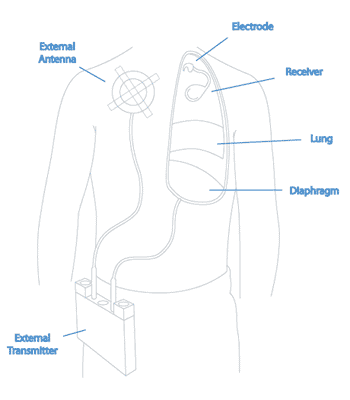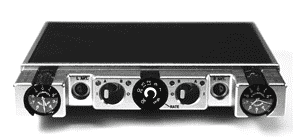02 February 2011
•2 minute read
Phrenic Nerve Pacemaker for long term ventilation
Phrenic Nerve Pacing is an alternative to long term use of conventional positive-pressure ventilators. Though this technology has been available for more than 20 years, it remains largely unknown to most Malaysian healthcare providers.
The main components of Phrenic Nerve Pacemakers are the:
- External transmitter
- External antennae for transmission of radiofrequency signals
- Subdermal receivers
- Electrodes which directly depolarize each Phrenic Nerve

In comparison with conventional ventilators, size and portability remain the main advantage of this system. It is particularly useful for younger patients with medical problems such as high cervical spinal cord injuries, congenital central hypoventilation syndrome, primary alveolar hypoventilation, certain forms of brainstem stroke, head injuries and brain tumors.
Despite having many advantages, this product is only effective on patients with intact phrenic nerve function. As such, proper evaluation of phrenic nerve function is imperative before surgical implantation of electrodes. Though the surgery can be performed at very reasonable charges, the actual product is costly and may be accessible to only a handful of patients. Nevertheless, the manufacturer estimates a full return on investment within a period of 4 years, when compared to the use of conventional ventilators.
Surgical placement of electrodes can either be done by the cervical or thoracic approach, depending on the individual Surgeon’s preference. The surgery itself is rather straight forward with most patients being discharges 2 days after the procedure. Initiation of pacemaker use is usually commenced about 6 weeks after surgery, allowing sufficient time for any edema surrounding the phrenic nerves to subside.

To date, this surgery has only been performed once in Malaysia – a joint effort between Institut Jantung Negara and Columbia Asia Extended Care Hospital to treat a quadriplegic patient with high cervical spinal cord injury.
Bilateral surgical wounds measuring approximately 2 ½ inches.
In summary, increased awareness towards the availability of such products will go a long way in providing better quality of life for selected patients. For more details on phrenic nerve pacing, please visit the manufacturer’s webpage: www.averybiomedical.com
Share:
Was this article helpful?
02 February 2011
•2 minute read
Phrenic Nerve Pacemaker for long term ventilation
Articles and Video
Learn more about General Practice in Columbia Asia
Learn MoreShare:
Was this article helpful?
Health Packages
Elevate your health with tailored health packages at Columbia Asia Hospital. Take charge of your health journey today.
Pink October 2025
From
RM80
Pink October 2024
From
RM80
HLA Policyholders Promo: Influenza Vaccination
RM65
Find Out More
